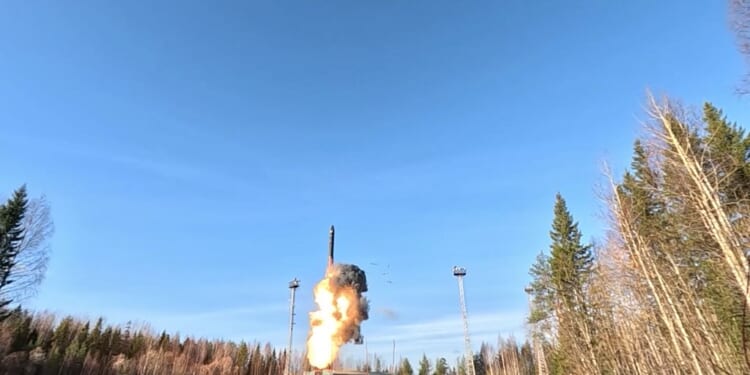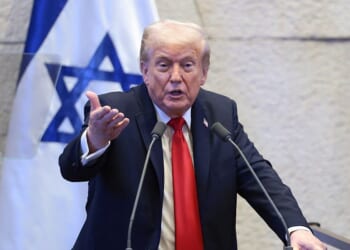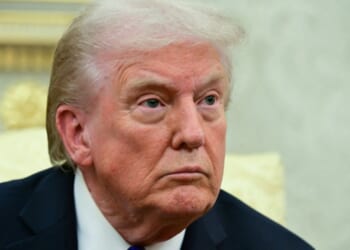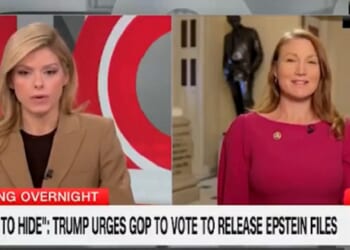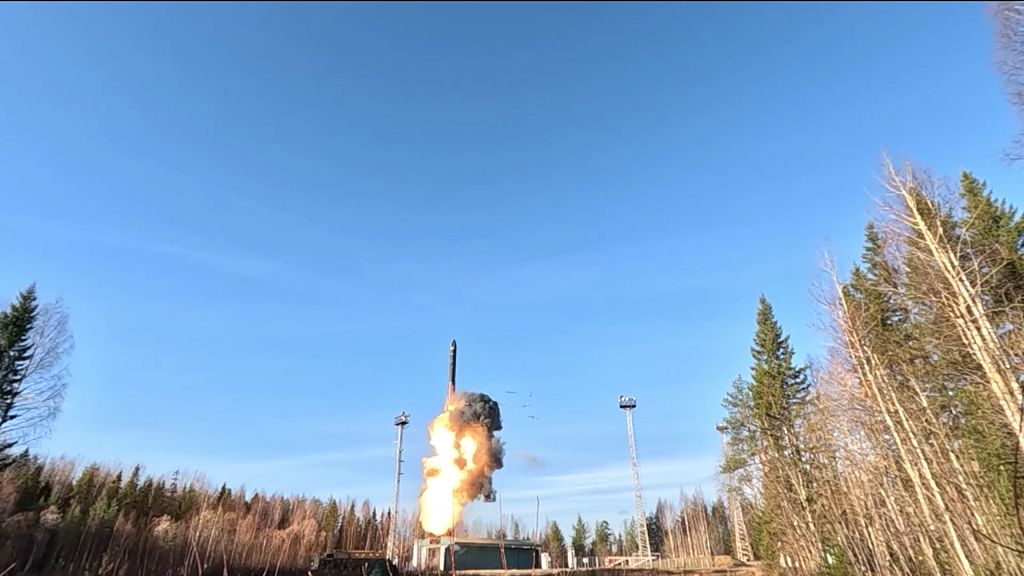
After 30 years, the Comprehensive Nuclear-Test-Ban Treaty is more symbolic than binding
In a bold move to establish US primacy within the nuclear arms community, President Donald Trump has explained he wants to start testing America’s arsenal again. After three decades of adherence to a test-ban agreement, Trump is breaking with what has ostensibly been an agreement among the nuclear nations, a pact not to test their atomic weapons. With North Korea having tested its small but growing nuclear stockpile and speculation that Russia and China have broken with the accord as well, the administration argues the US should also ensure its own weapons actually work.
Trump to the War Department: Resume Nuclear Testing
The president’s decision to resume nuclear testing is not without some justification. The West has been subject to periodic but persistent threats by Russia, and a nuclear response by Moscow is always an option. Additionally, North Korea has doled out its share of threats and has backed them up with a program of continuous testing of nuclear-capable ballistic and cruise missiles. For the US to re-establish a nuclear testing program would mean publicly walking away from the Comprehensive Nuclear-Test-Ban Treaty (CTBT) signed on September 24, 1996, the day the treaty was opened for signatures. Russia also signed the treaty that day. Up to that point, there had been 2,045 nuclear weapons test events, some testing more than one device.
Trump’s recent direction to the Department of War caused alarm among arms control enthusiasts and nuclear policy wonks. The US president posted on Truth Social: “Because of other countries’ testing programs, I have instructed the Department of War to start testing our Nuclear Weapons on an equal basis. That process will begin immediately.” The Council on Foreign Relations observed: “The announcement stirred concern among nuclear policy experts because of its potential disruption of what has been a more than three-decades-long moratorium on live testing of nuclear explosives.”
But has there actually been a universal moratorium on nuclear testing? India conducted five underground nuclear device tests in 1998, three on May 11 and two on May 13. Pakistan also conducted two underground nuclear tests in 1998. Neither India nor Pakistan is a signatory to the CTBT, but both have lived up to the tenets of the agreement since they last tested nuclear weapons.
The most troubling of those nations not signing the CTBT is North Korea. The Democratic People’s Republic of Korea (DPRK) conducted underground tests of nuclear weapons between 2006 and 2017. Many experts believe the DPRK is preparing for another series of atomic weapons testing. The Defense Intelligence Agency, in its 2025 Worldwide Threat Assessment, stated:
“In early 2021, Kim [Kim Jong Un DPRK President] laid out a five-year defense plan that emphasized developing tactical nuclear weapons and further highlighted the importance of developing ‘smaller and lighter nuclear weapons,’ and ‘ultra-large nuclear warheads’…North Korea has restored its nuclear test site and is now postured to conduct a seventh nuclear test at a time of its choosing.”
As nuclear testing for US adversaries becomes more of a reality, the CTBT becomes more of a symbolic gesture. There are indicators that other US adversaries are boosting their nuclear weapons capability, which would prompt President Trump to want to ensure America is prepared.
Adversaries Increase the Atomic Threat
On November 2, 2023, Russian President Vladimir Putin signed a law formally withdrawing from the CTBT. Though this withdrawal from the CTBT has not led to a demonstrable resumption of nuclear testing, Russia is no longer legally bound by the CBTB ratification provisions, which include the ban on nuclear test explosions. Whether abiding by the strictest limits of the CTBT or not, Russia has not been sitting still in its development of nuclear-capable weapons. In the course of one week, October 26 through October 29, Russian news sources announced a successful test of a nuclear-powered “Storm Petrel,” a hypersonic nuclear-powered cruise missile designed to have unlimited range and to evade defenses. Additionally, Putin revealed the successful testing of the Poseidon nuclear-capable underwater drone, a “super torpedo” intended to create gigantic waves to destroy coastal cities.
Combine Russia’s posture regarding its being on the outside of the CTBT with recently announced nuclear weapons enhancements, and you have the makings of a real threat. Include China’s having 1,000 nuclear warheads by 2030 as experts predict, and why wouldn’t the prudent action be to ensure the US is equally capable to deter such a threat – a threat that Trump recognizes? Naysayers and critics warn that resuming nuclear warhead testing will rekindle a nuclear arms race. From President Trump’s perspective, the embers of a race for nuclear supremacy were never fully extinguished.
While attending the Association of Southeast Asian Nations, Secretary of War Pete Hegseth took a question regarding the US resuming nuclear weapons testing, what type of testing, and how soon? Hegseth responded:
“We need to have a credible nuclear deterrent. That is the baseline. Resuming testing is a very responsible way to do that. It makes nuclear conflict less likely. Know what you have and make sure it operates properly. America will ensure that we have the strongest, most capable nuclear arsenal so we maintain peace through strength.”
When an adversary knows that American nuclear weapons have been tested and proven effective, it adds to the element of deterrence.
US nuclear warheads are, on average, 30 years old. According to the Science History Institute, “[t]he US stockpile includes thousands of aging weapons that weren’t designed to last, yet they can’t legally be detonated to make sure they still work.” President Trump intends to change that.
~
The views expressed are those of the author and not of any other affiliate.
Liberty Nation does not endorse candidates, campaigns, or legislation, and this presentation is no endorsement.

